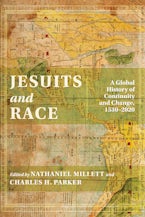Pious Imperialism
Spanish Rule and the Cult of Saints in Mexico City
Published by: University of New Mexico Press
This book analyzes Spanish rule and Catholic practice from the consolidation of Spanish control in the Americas in the sixteenth century to the loss of these colonies in the nineteenth century by following the life and afterlife of an accidental martyr, San Felipe de Jésus. Using Mexico City-native San Felipe as the central figure, Conover tracks the global aspirations of imperial Spain in places such as Japan and Rome without losing sight of the local forces affecting Catholicism. He demonstrates the ways Spanish religious attitudes motivated territorial expansion and transformed Catholic worship. Using Mexico City as an example, Conover also shows that the cult of saints continually refreshed the spiritual authority of the Spanish monarch and the message of loyalty of colonial peoples to a devout king. Such a political message in worship, Conover concludes, proved contentious in independent Mexico, thus setting the stage for the momentous conflicts of the nineteenth century in Latin American religious history.
Cornelius Conover is an associate professor of history at Augustana University.
"In following this saint and his cult over several centuries and political regimes, Conover has made a welcome contribution to the scholarship on the intersection of religion and power in the Spanish empire."--Jodi Bilinkoff, Church History
"An important scholarly monograph devoted to Saint Philip of Jesus, the first creole beatified in the New World."--Pierre Ragon, Hispanic American Historical Review
"Pious Imperialism is an innovative analysis that exposes and analyzes the vicissitudes of life in the Spanish and Catholic empire. With this text Conover introduces an important element, the analysis of liturgical practice and history, into the conversations that continually interpret and reevaluate the relationship between church and empire and the ways in which this relationship could be mobilized or invoked to the benefit or detriment of the prevailing sociopolitical contexts."--Daniel E. Nourry Burgos, Reading Religion
"The new prism through which Conover views Mexican history makes this volume an important source for graduate students and for established scholars. . . . Highly recommended."
--Choice
Preface. The Life of San Felipe de Jesús
Acknowledgments
Chapter One. Introduction
Chapter Two. Spain's Discalced Franciscan Mission in Japan, 1593-1597
Chapter Three. Beatification and the Politics of Piety, 1597-1627
Chapter Four. Imperial Saints in Mexico City, 1625-1680s
Chapter Five. The Rise and Fall of Creole Holy Figures, 1680s-1740s
Chapter Six. Bourbons and Breviaries: Devotional Reform in Mexico City, 1740s-1790s
Chapter Seven. Mexico City's Saints at the End of Empire, 1790s-1820
Chapter Eight. Decolonizing the Church in the Mexican Republic, 1821-1836
Chapter Nine. Conclusion
Appendix. Reform of the Liturgy: Feasts of Required Rest and Church Attendance
Notes
Bibliography
Index







